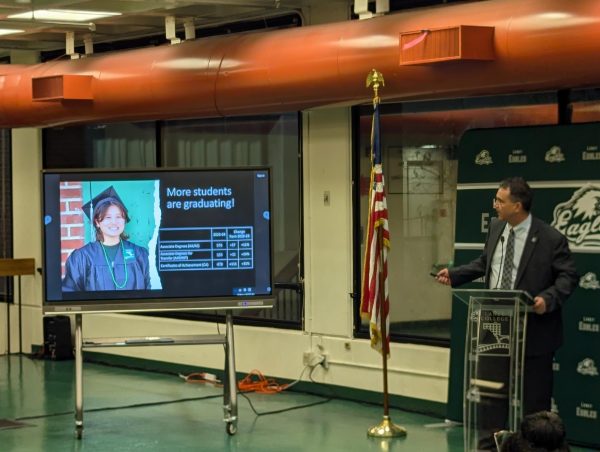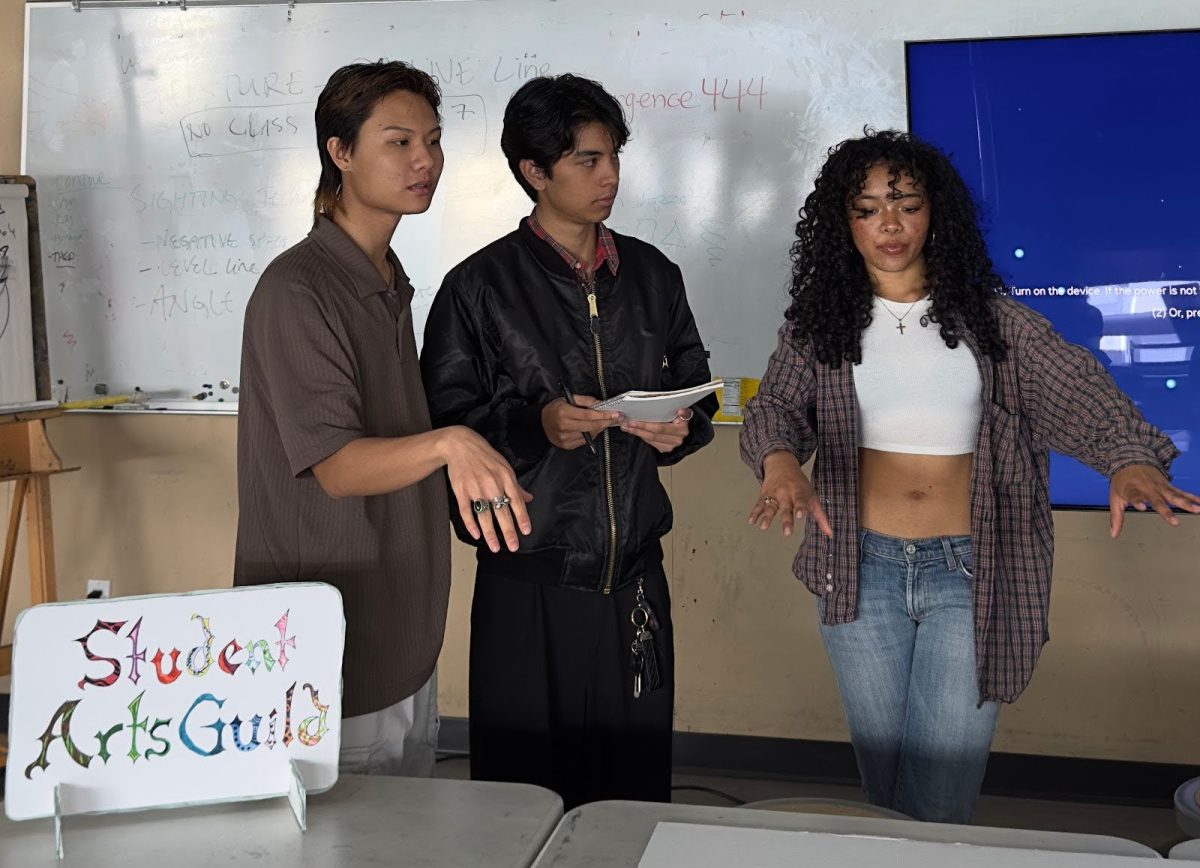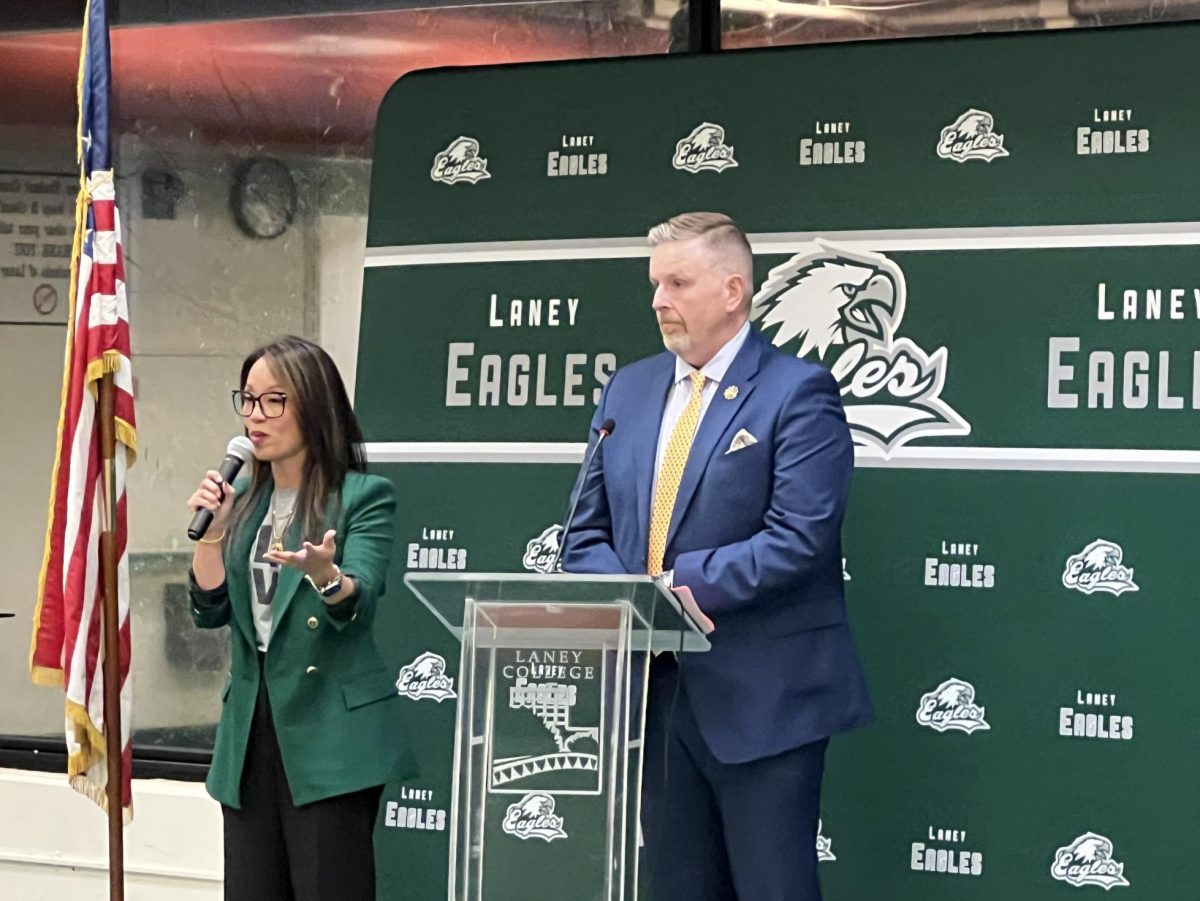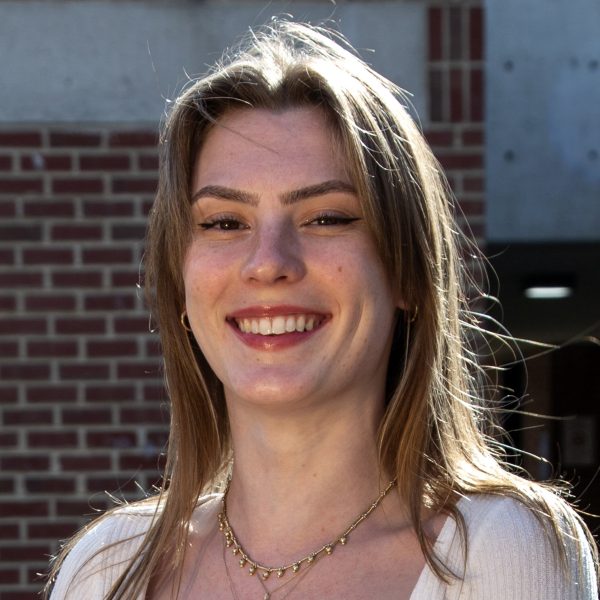Upcoming changes to the funding structure of California community colleges were a hot topic during the Oct. 22 Peralta Community College District (PCCD) Board of Trustees meeting, held at Laney College. District officials warned the board about the new Student Centered Funding Formula’s (SCFF) impacts on an already shaky financial outlook.
“Have you not seen that the sky’s already fallen and we’re walking around it?” PCCD Chancellor Tammeil Gilkerson told trustees.
Gilkerson, alongside new Deputy Chancellor and Chief Operating Officer Greg Nelson, guided the board through the calculations for the budget based on the Student Centered Funding Formula, a new state funding is designed to allocate funding to community colleges based on performance and student outcomes, rather than relying solely on enrollment numbers.
The “primary goal of the funding is to incentivize colleges to really help students complete and close those achievement gaps,” Gilkerson stated.
The new formula is based on:
- 70% enrollment
- 20% financial need of the student body, determined by the number of undocumented students, Pell Grant students, and California College Promise Grant recipients. About three in four Peralta students fall into this category.
- 10% “student success” metrics such as degrees and transfers completed, career education units, or the number of students earning a “living wage”
“The reason they’re doing this is really again trying to close those achievement gaps and recognize the different types of students we serve,” Gilkerson said.
California Community Colleges originally implemented the new funding formula in 2018, but included a “hold harmless” provision to protect districts from losing funding.
Under “hold harmless,” districts’ state funding was allowed to match its 2017-18 funds, with annual Cost of Living Adjustments, known as COLAs, to account for inflation. That helped districts like PCCD who saw enrollment decline during the COVID-19 pandemic.
“Hold harmless” is set to expire at the end of this fiscal year. Starting July 1, 2025, PCCD’s state funding will be determined by SCFF.
Until PCCD’s metrics under SCFF increase, the district’s state funding will be frozen, without additional COLAs.
This makes things like enrollment, grant recipients and student success a huge priority for PCCD. Gilkerson emphasized the need to bring facilities up to code standards to entice more people to apply.
Gilkerson gave a breakdown of how the district’s state revenue would be calculated under the new formula, based on July 2024 numbers.
- Base Allocation (70%): $106,400,977
- Supplemental Allocation (20%): $20,787,568
- Student Success Allocation (10%): $11,411,758
That adds up to $138,600,303, just $10 million short of the district’s current funding level of $148,941,102 under hold harmless.
District faces bleak outlook under SCFF
PCCD’s enrollment has declined by over 30% in the past ten years, according to Nelson.
Nelson compared PCCD’s enrollment to similar community college districts in the state. Only two other districts in the state have four colleges, and Peralta’s enrollment lags significantly behind both of them.
Los Rios Community College District, in Sacramento, has 49,315 full-time equivalent students, while State Center Community College District, in Fresno, has 33,151. PCCD’s full-time equivalent enrollment is 16,614.
Peralta also has lower enrollment than some other districts in the Bay Area with fewer colleges. For example, San Mateo Community College District has 21,379 full-time equivalent students for three colleges.
Future expenses are expected to rise, but the district’s state funding is expected to plateau unless its funding metrics under SCFF increases.
Additionally, the district is facing another $6.5 million in budget cuts for the current year, on top of the $12 million in cuts already approved. Part of that is due to a midyear $2.8 million cut in state funds, according to Nelson.
Nelson showed a slide outlining the district’s financial forecast for the next four years. The combination of rising expenses, plateauing state funding, and the need to balance reserve funds mean more cuts will be needed each year. Next year, the district could need to make as much as $15 million in cuts; for the 2027-28 year, that number could be as much as $32.6 million.
Nelson, who stepped in as COO in July, urged district leaders to “do something now” about district finances.
“We can’t keep kicking the can down the road like we’ve done for the last 15 years,” Nelson said.
Laney faculty share college highlights
Before the meeting, trustees and college officials took a tour of the Laney campus. The group checked out the state of the campus, visited the Cosmetology and Journalism Department, and ended the tour with dinner at the Laney Cafeteria.
Laney College President Rudy Besikof kicked off the meeting by introducing a presentation about the school’s programs. Laney faculty members highlighted the progress and achievements of their respective departments over the last several years.
English for Speakers of Other Languages (ESOL) Department Chair, Steven Zetlan, mentioned that Laney became a Hispanic Serving Institution two years ago. To respond to an influx in Spanish-speaking students, the department developed new HSI programming.
A “newcomer” program was established to help with an “explosion of unaccompanied minors” from Central and South America. The department is also developing an ESOL to Puente Pathway program to help improve their student retention rates.
Leslie Blackie, a Biology Instructor and Faculty Senate President, mentioned how Laney’s Career Technical Education programs can work together to have an impact both on and off campus.
For example, Cosmetology students have offered hair and makeup services for people going to the Photography department for headshots, Blackie said. Machine Tech students have made parts that NASA has used in their space program. Some departments even share equipment: welding and biology students both use a scanning electron microscope.
Ethnic Studies Instructor Roger Chung highlighted Laney’s Restoring Our Communities (ROC) program, which serves formerly and currently incarcerated students.

The program has enrolled nearly 1,000 students since its creation in 2016, according to Chung. In the 2023-24 school year, ROC students earned a total of 66 degrees, certificates and awards.
The program provides a “clean slate” service three times a year that helps people clear their criminal records. The program has seen over 200 records dismissed, reduced or expunged, according to Chung.
“That means passing a background check to get a job,” Chung said.
Besikof ended the presentation showing Laney’s graduation growth since 2021. According to the data, 1,224 students received degrees and certificates from Laney College during the 2023-24 school year, a jump from 1,040 students in the previous school year.
“The thing that I’m so proud of is with all of this work we’re doing and all of the collaboration, more of our students are getting up on the podium to graduate,” Besikof said. “That’s happening.”


























